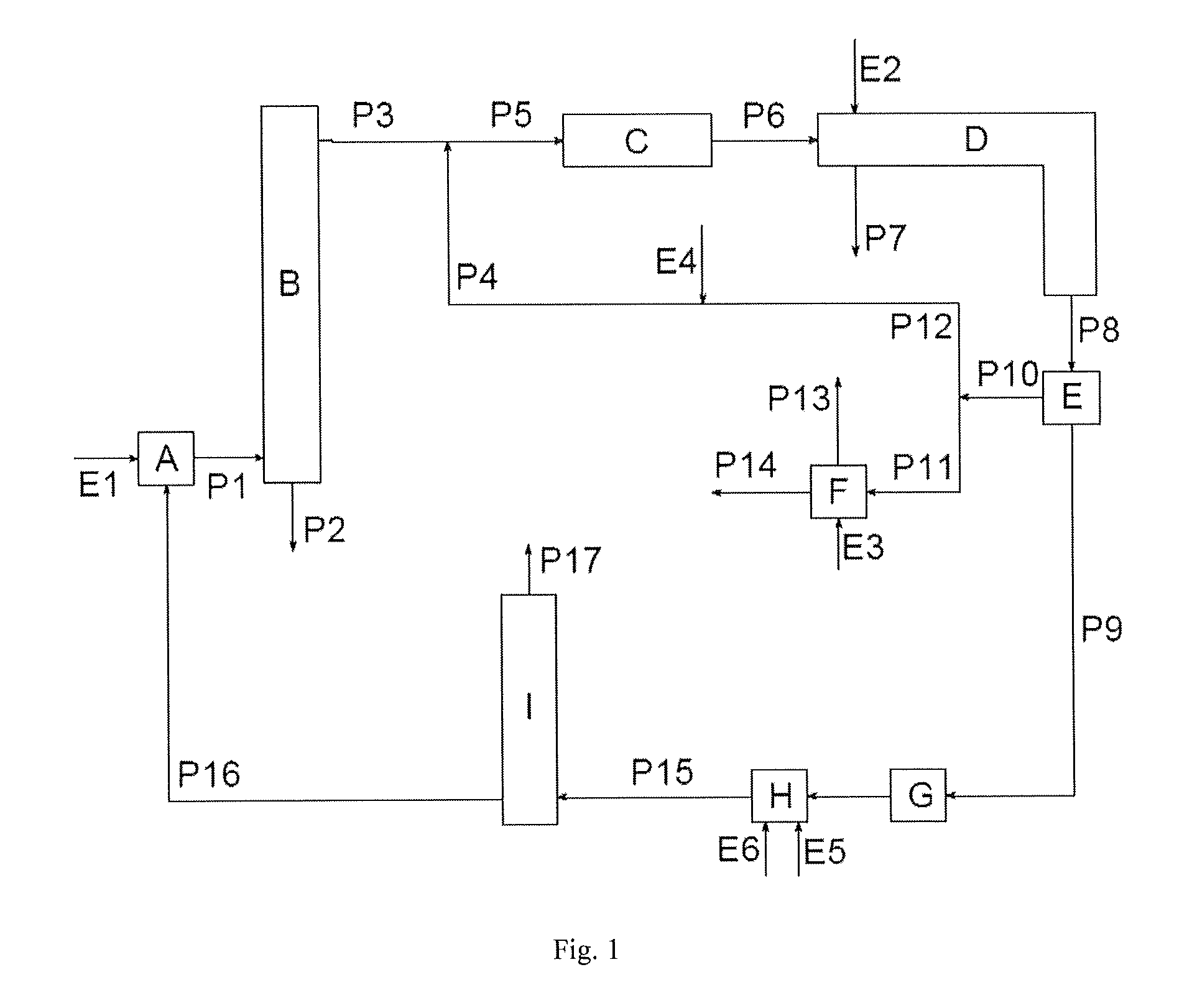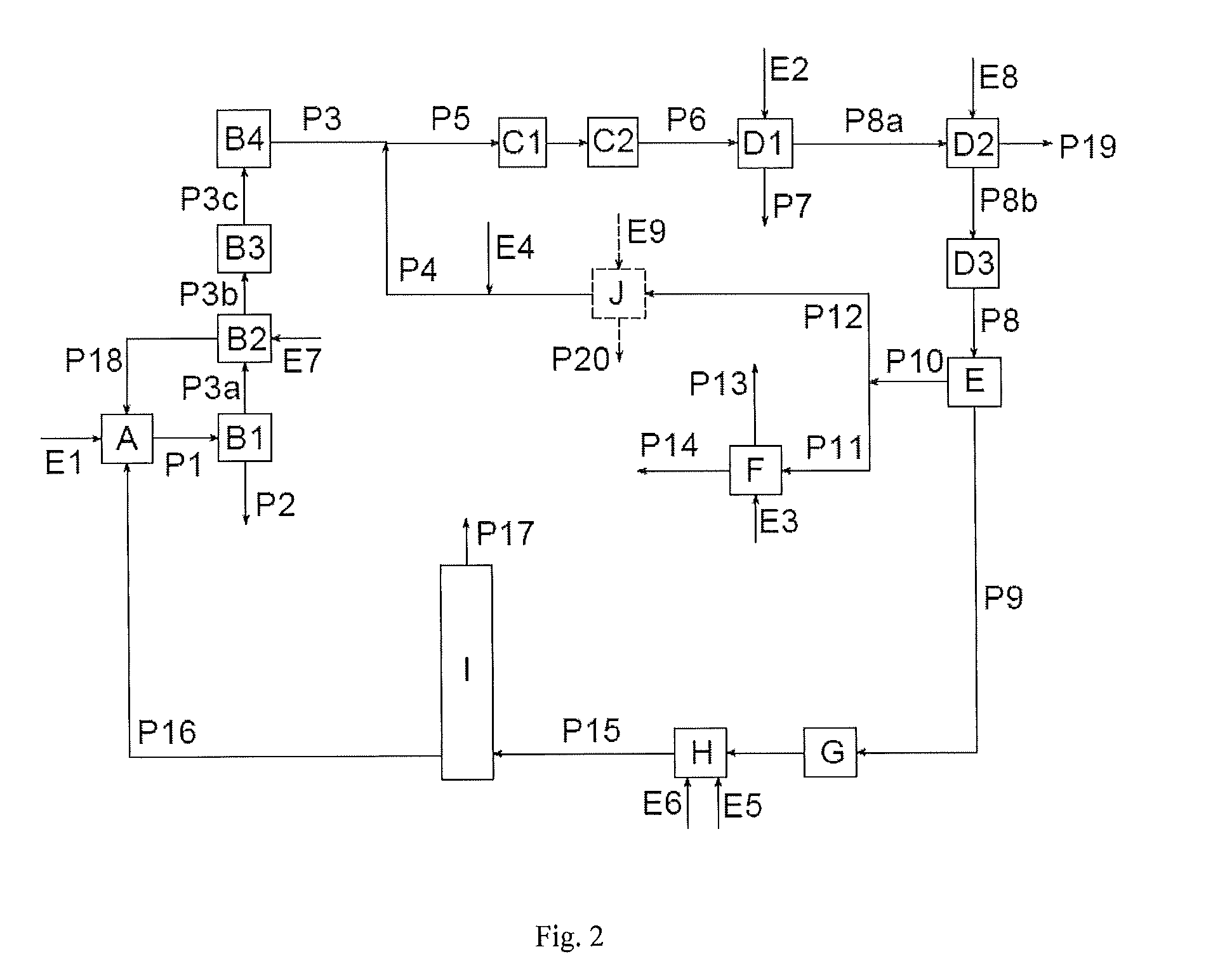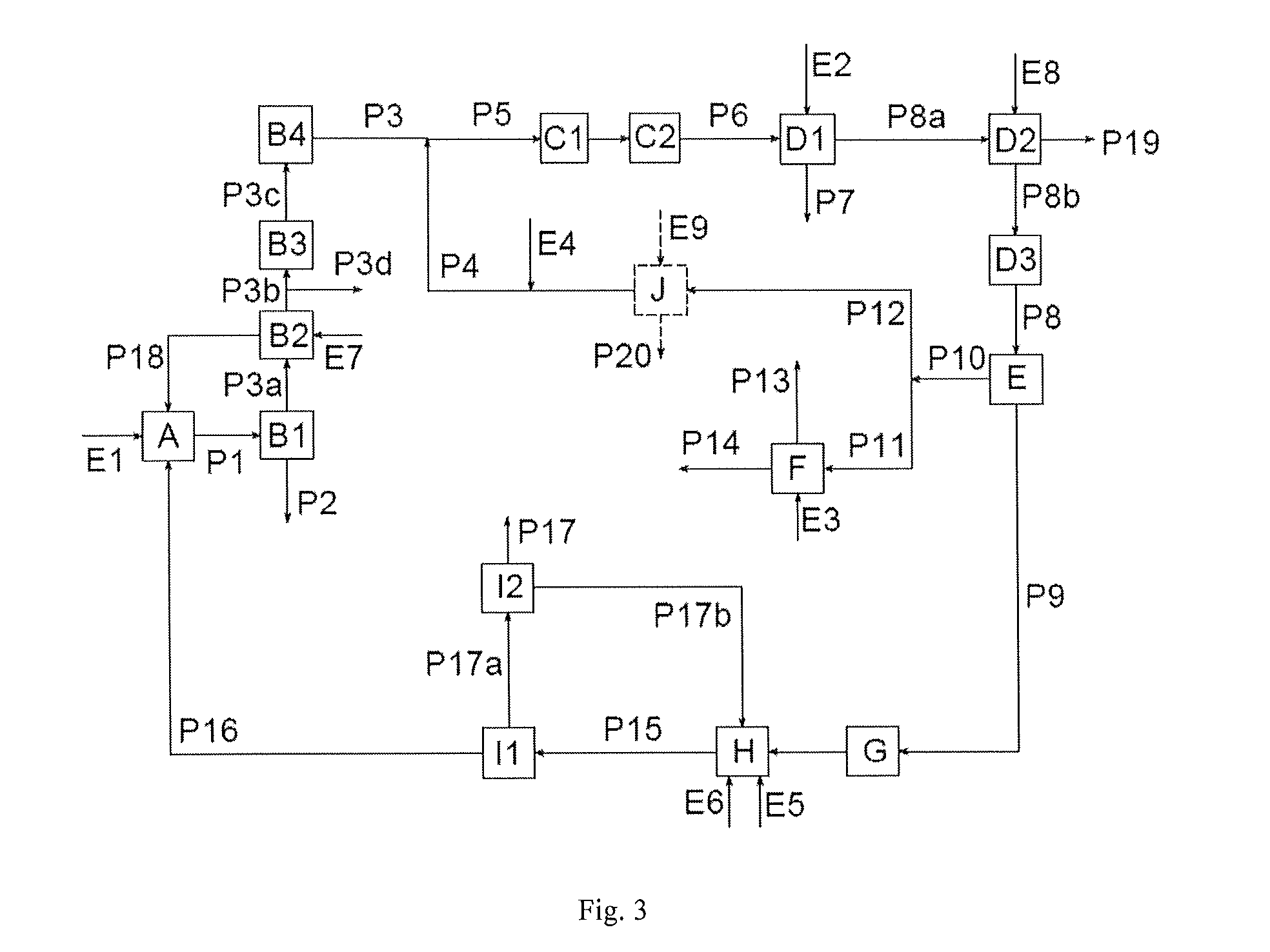Process for the preparation of isocyanates
a technology of isocyanate and process, which is applied in the preparation of isocyanate derivatives, isocyanate purification/separation, organic chemistry, etc., can solve the problems of unselective absorption of chlorine, difficulty in determining the purity of isocyanate, and high co conten
- Summary
- Abstract
- Description
- Claims
- Application Information
AI Technical Summary
Benefits of technology
Problems solved by technology
Method used
Image
Examples
example 1
According to the Invention
[0116]FIG. 2 is the basis of the simulation.
[0117]With stream P16, phosgene is fed to the reactor A in an excess of 100% of the stoichiometric amount compared with the primary amine toluylenediamine (TDA) contained in the stream E1. The reaction to give toluylene-diisocyanate (TDI) is carried out at 150° C. under a pressure of 2.6 bar. The majority of the unreacted phosgene is taken off as stream P1 together with a solvent (ortho-dichlorobenzene, ODB), the TDI and the by-product HCl and cooled to 35° C. in B1. The product TDI is taken off in liquid form from B1 with the stream P2, and HCl, phosgene and further components leave the stage B1 in gaseous form with the stream P3a. P3a is brought into contact with the stream E7, which contains fresh ODB, in the absorber stage B2. In this procedure, the phosgene contained in P3a is mostly absorbed. The HCl leaves the absorber in gaseous form with the stream P3b. P3b contains, inter alia, still approx. 0.23 vol. % ...
example 2
According to the Invention
[0124]FIG. 3 is the basis of the simulation.
[0125]Example 2 contains the same steps as Example 1, but a part of the HCl gas is additionally diverted from the absorber B2 and led to an HCl absorber (not shown). A part of the stream which leaves the condensation step I in gaseous form and contains the CO excess is furthermore recycled into the reactor H.
[0126]Stages A, B1 and B2 are operated just as described in Example 1. The HCl leaves the absorber in gaseous form with the stream P3b. P3b contains, inter alia, still approx. 0.24 vol. % of phosgene, approx. 1.2 vol. % of N2 from procedures for inertization or to maintain pressure, and traces of the solvent ODB. Its content of CO2 of 1.5 vol. %, however, is now significantly higher than in Example 1, since by feeding back in the condensation step I1 / I2 the amount sluiced out there has become smaller and a concentration thus occurs. On the other hand, CO still occurs only in traces. 10% of P3b is sluiced out a...
example 3
Comparison Example
[0132]FIG. 4 is the basis of the simulation.
[0133]Example 3 contains the same steps as Example 1, but E is now configured as a distillation column in order to free the liquid chlorine removed from CO2 and dissolved oxygen.
[0134]Stages A, B1, B2, B3 and B4 are operated just as described in Example 1. The HCl leaves the absorber B2 in gaseous form with the stream P3b. P3b contains, inter alia, still approx. 0.22 vol. % of phosgene, approx. 1.2 vol. % of N2 from procedures for inertization or to maintain pressure, and traces of the solvent ODB. Its content of CO2 and CO of 0.15 vol. % (CO2) and 0.03 vol. % (CO) is very much lower than in Example 1, since due to the distillation of the liquid chlorine essentially no CO2 and no oxygen is passed with the stream P9 into the phosgene preparation step H.
[0135]The gas stream P3b is compressed to 6 bar in the compressor B3 and led as stream P3c into the purification stage B4.
[0136]The solvent ODB is chiefly removed from strea...
PUM
| Property | Measurement | Unit |
|---|---|---|
| Fraction | aaaaa | aaaaa |
| Fraction | aaaaa | aaaaa |
| Pressure | aaaaa | aaaaa |
Abstract
Description
Claims
Application Information
 Login to View More
Login to View More - R&D
- Intellectual Property
- Life Sciences
- Materials
- Tech Scout
- Unparalleled Data Quality
- Higher Quality Content
- 60% Fewer Hallucinations
Browse by: Latest US Patents, China's latest patents, Technical Efficacy Thesaurus, Application Domain, Technology Topic, Popular Technical Reports.
© 2025 PatSnap. All rights reserved.Legal|Privacy policy|Modern Slavery Act Transparency Statement|Sitemap|About US| Contact US: help@patsnap.com



